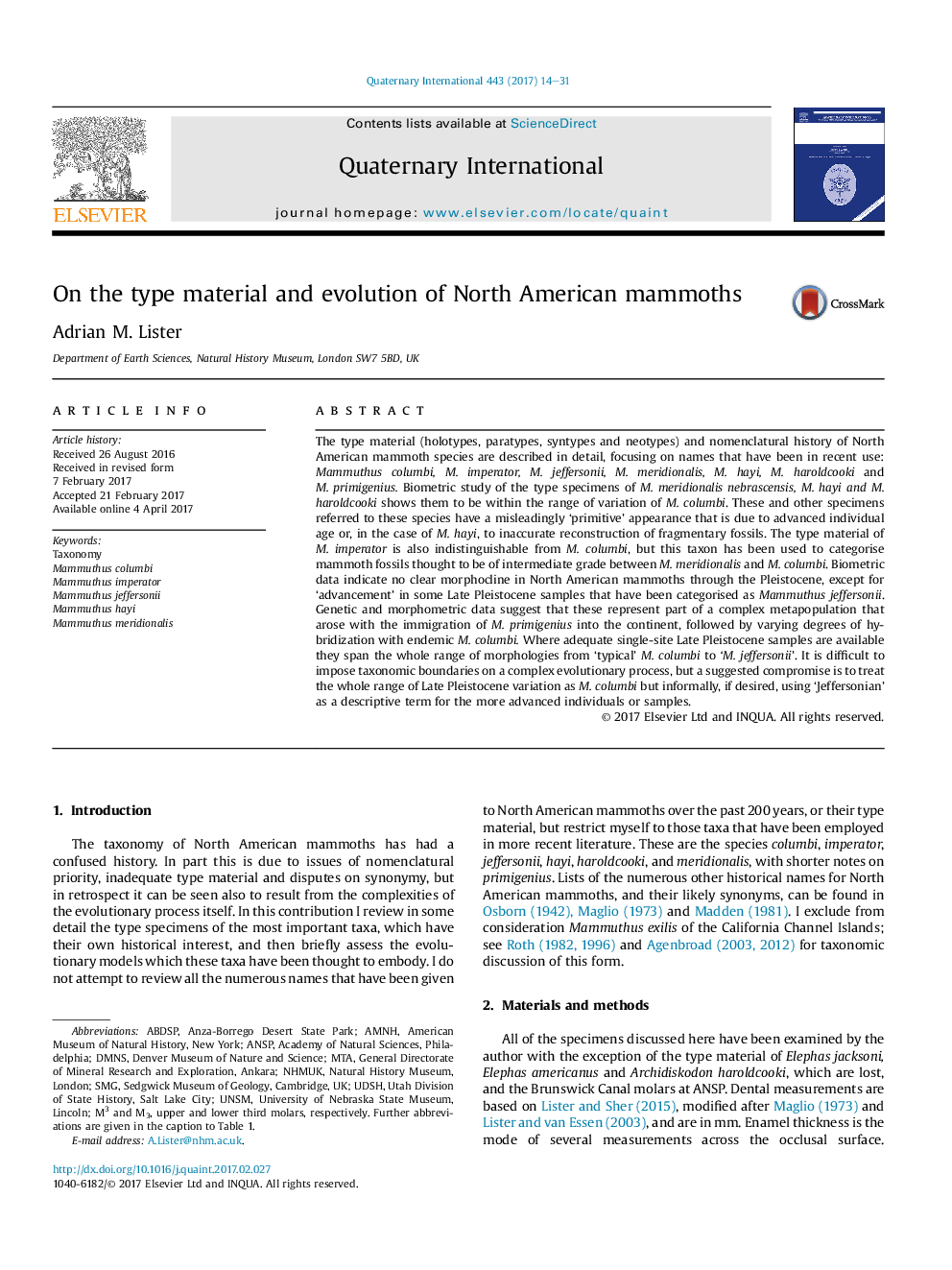| Article ID | Journal | Published Year | Pages | File Type |
|---|---|---|---|---|
| 5113150 | Quaternary International | 2017 | 18 Pages |
Abstract
The type material (holotypes, paratypes, syntypes and neotypes) and nomenclatural history of North American mammoth species are described in detail, focusing on names that have been in recent use: Mammuthus columbi, M. imperator, M. jeffersonii, M. meridionalis, M. hayi, M. haroldcooki and M. primigenius. Biometric study of the type specimens of M. meridionalis nebrascensis, M. hayi and M. haroldcooki shows them to be within the range of variation of M. columbi. These and other specimens referred to these species have a misleadingly 'primitive' appearance that is due to advanced individual age or, in the case of M. hayi, to inaccurate reconstruction of fragmentary fossils. The type material of M. imperator is also indistinguishable from M. columbi, but this taxon has been used to categorise mammoth fossils thought to be of intermediate grade between M. meridionalis and M. columbi. Biometric data indicate no clear morphocline in North American mammoths through the Pleistocene, except for 'advancement' in some Late Pleistocene samples that have been categorised as Mammuthus jeffersonii. Genetic and morphometric data suggest that these represent part of a complex metapopulation that arose with the immigration of M. primigenius into the continent, followed by varying degrees of hybridization with endemic M. columbi. Where adequate single-site Late Pleistocene samples are available they span the whole range of morphologies from 'typical' M. columbi to 'M. jeffersonii'. It is difficult to impose taxonomic boundaries on a complex evolutionary process, but a suggested compromise is to treat the whole range of Late Pleistocene variation as M. columbi but informally, if desired, using 'Jeffersonian' as a descriptive term for the more advanced individuals or samples.
Related Topics
Physical Sciences and Engineering
Earth and Planetary Sciences
Geology
Authors
Adrian M. Lister,
